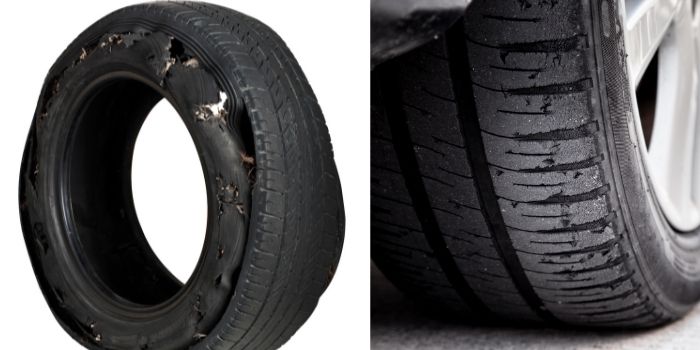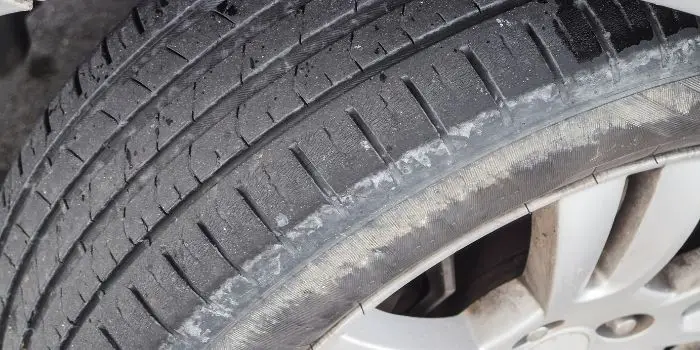I know how it feels when you turn the key, and nothing happens.
It happened to me once with my old diesel truck.
I was in Montana, and it was negative 15 degrees outside. I had to get to work, so I could not afford to wait around for my 6.7 to warm up.
Most probably, it was due to diesel fuel gelling.
If you are stuck in a similar situation or want to know how to avoid the situation, here are a few tips that might help you get your truck started in extreme cold.
Table of Contents
Starting a Diesel Engine in the Cold
The first thing you want to do is to make sure the battery is strong enough to start the truck.
If it is more than three years old, it might be time to replace it. But if you are already stuck, you can try jump-starting the truck.
The next obvious thing to make sure of is there’s enough fuel in the tank. If the tank is less than half full, it might not be enough to get the truck started.
To be on the safe side, always keep the tank at least half full. Or better keep a can of fuel in the truck just in case you might need it in an emergency.
Other than these, here are a few more things that will certainly help…
1. Check the Glow Plugs
If your truck has glow plugs, ensure they are working.
Glow plugs help preheat the air in the cylinders so the fuel can ignite easier. If they are not working, it will be very difficult to start the truck.
Just in case it doesn’t work, try starting the truck without them.
To do this, turn the key to the “on” position and wait for the glow plug light to turn off. Then, turn the key to the “start” position and hold it there for a few seconds.
Try doing this a few more times if the engine doesn’t start.
2. Check the Engine Oil and Air Filter
If the engine oil in your truck is low or not of the right quality, it might not lubricate the engine and get it started.
In cold weather, it’s important to use an oil that has a low viscosity. This will help your engine start easier in the cold weather.
A dirty air filter also restricts the airflow to the engine and makes it harder for the engine to start.
Clean or replace the air filter if it’s needed. Also, check the fuel filter – if it’s clogged, it’s difficult for the engine to start.
3. Start the Truck with the Heater On
The heater can help thaw the engine and make it easier to start.
To begin, turn the key to the “on” position and wait for the glow plug light to stop shining. Next, turn on the heater and let it run for a minute or two.
After that, turn the key to the “start” position and leave it there for a few seconds.
If you have a block heater, it might also help; try using it to start the truck. A block heater is a device that warms up the engine, so it’s easier to start with it.
4. Start the Truck with the Accelerator Pedal Depressed
Depressing the accelerator pedal can help get the cold engine started.
Start by ensuring the parking brake is engaged, and the gear shift is in the park or neutral. Turn the key to the “on” position, then press down firmly on the accelerator pedal.
Do not press it all the way to the floor, as this will flood the engine with fuel and make it difficult to start.
Next, turn the key to start and hold it there for a few seconds. Listen for the engine to crank over. If the engine has been sitting for a while, it may take multiple attempts of starting and releasing the key before it will catch.
Once the engine starts, hold the accelerator pedal down for a few seconds and then release it. The engine should stay running without further assistance. If it stalls, repeat this process until it runs smoothly.
Is it Bad to Cold Start a Diesel?
It’s not necessarily bad to start a diesel cold, but it can put stress on the engine.
Hence it’s recommended to warm up the engine before starting it. You can do this by:
- plugging in a block heater
- parking the truck in a warm garage
- starting the truck and letting it idle for a few minutes
In some cases, diesel engines take longer to warm up because they need to heat up the glow plugs before they can start.
Also, it’s good to wait until the diesel engine reaches operating temperature, which is typically about 185 to 220 degrees Fahrenheit, before driving.
This can take anywhere from 30 seconds to a minute or two, depending on the size of the engine.
If you’re in a hurry, you can drive the truck after a minute or so, but it’s best to wait until the engine is fully warmed up.
At What Temperature Does Diesel Fuel Gel?
Diesel fuel can start to gel as temperatures drop below 32 degrees Fahrenheit.
Usually, the fuel begins to crystalize during cold weather once it is close to 10 to 15 degrees Fahrenheit. This will then clog the fuel system, making it difficult for the truck to start.
However, the gelling process can happen more quickly in cold weather if the fuel has water in it. And also depending on the source and the quality of fuel.
Water, in general, can cause diesel fuel to freeze and turn into a gel-like substance. This can clog up the fuel lines and prevent the engine from starting.
To avoid the conditions like frozen diesel fuel, you should always make sure that the fuel is clean and free of water.
You can also add a fuel additive to your diesel fuel to help prevent gelling.
Final Thoughts
No matter if it’s your 6.7 Powerstroke, Cummins, or Duramax, cold weather can be hard on your diesel truck.
By following the tips above, you can help ensure that your truck will start on those freezing winter days.
If you’re still having trouble starting your truck, call a diesel mechanic, tow truck, or roadside assistance to help you out.

Based in Orem (Utah) John Paterson graduated from Utah Valley University and has begun writing in 2009. He has a large wealth of experience in writing articles related to cars, automotive repair, wheels, cleaning/maintenance, and much more. He has also written instructional articles in a similar niche for a few online publications as well. Currently, he works as a mechanic in his personal garage shop where he loves serving his countrymen from his heart.





